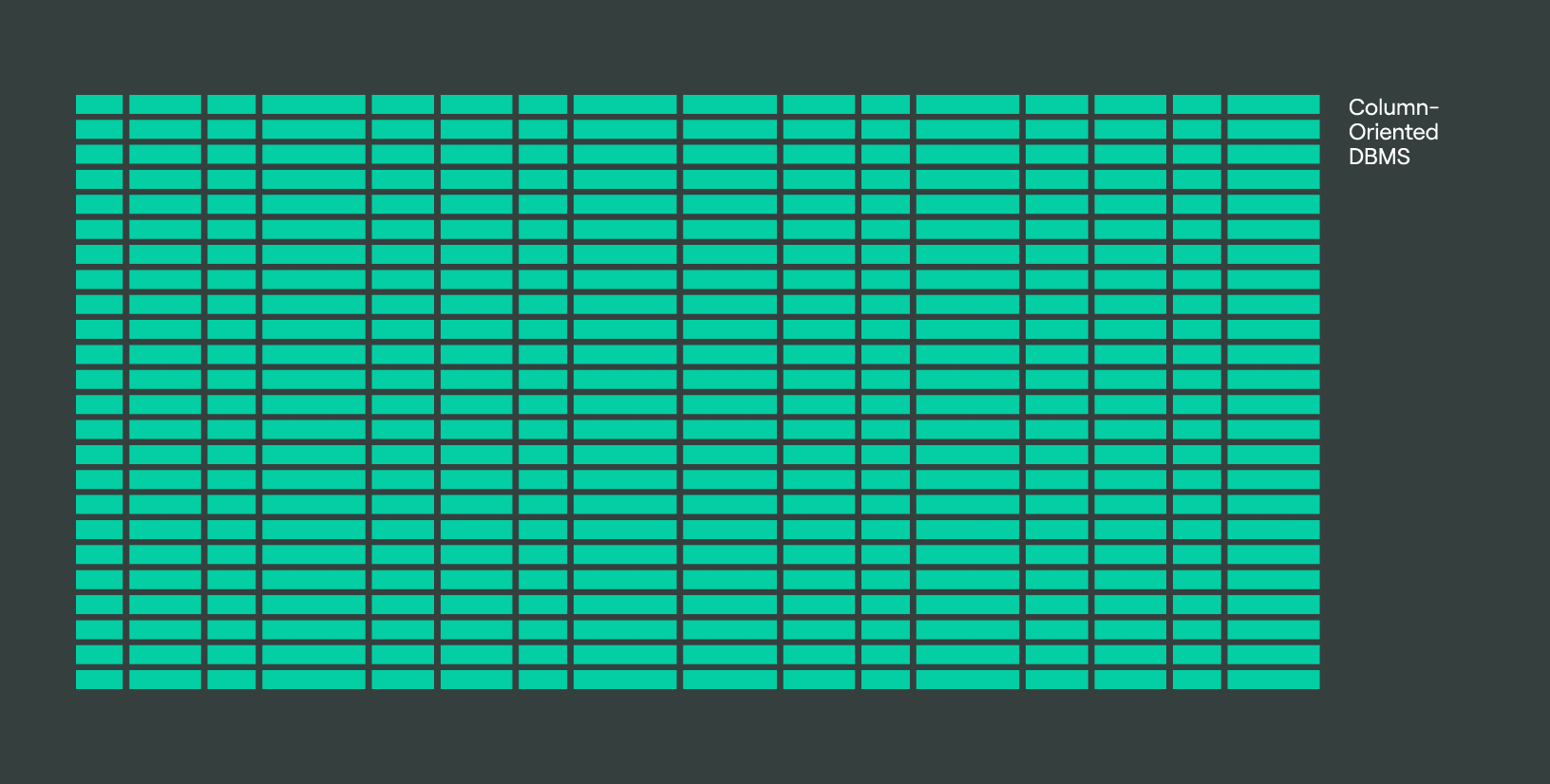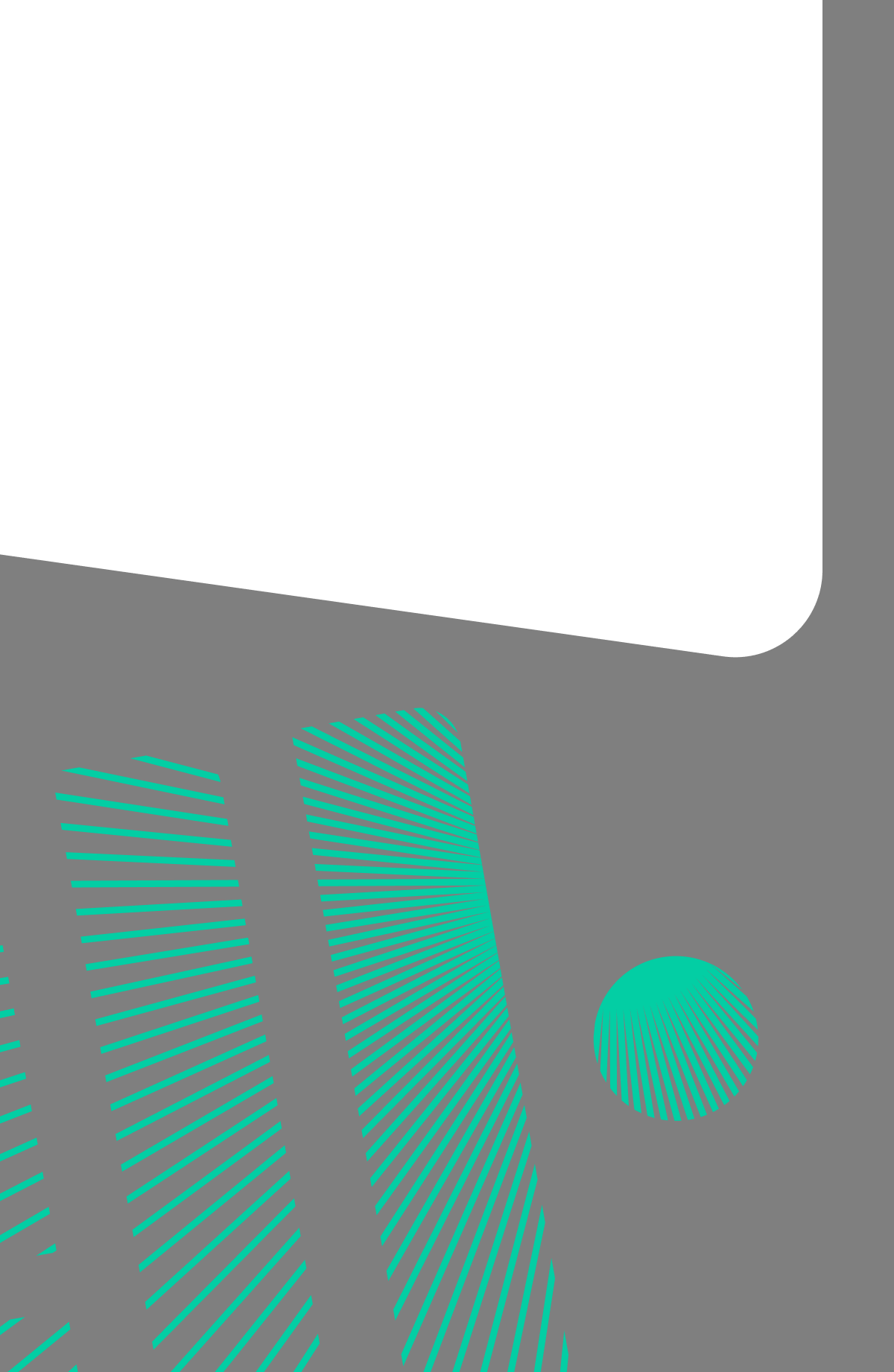
Types of databases: a guide for data enthusiasts

In this article, we’ll talk about:
Databases are essential for storing data, organizing, and accessing information. This guide explores the wide variety of databases, examining their features, applications, and the situations in which each type performs well. If you are experienced in data or new to it, this detailed overview will help you select the appropriate database technology and improve your data management techniques.
Below is a brief analysis of the existing types of databases.
1. Relational databases
2. NoSQL databases
3. In-memory databases
4. NewSQL databases
5. Columnar databases
6. Graph databases
7. Time-series databases
8. Object-oriented databases
9. Distributed databases
10. Vector databases
Types of databases
Knowing the different kinds of databases is crucial for successful data control. Each category of databases has distinct roles and applications, and it is crucial to know the capabilities and uses of the different types of databases as they are described below.
1. Relational databases
Understanding relational databases
Organizing and managing data is made easier with the use of powerful relational databases. They implement an organized layout utilizing tables comprised of rows (records) and columns (fields). Every table signifies a distinct entity, and connections between them are created by utilizing foreign and primary keys. This design enables users to effectively access and handle data using SQL (Structured Query Language). Relational databases excel at maintaining data integrity, ensuring accurate and consistent data throughout the system.
Popular relational database management systems
Some of the most widely used relational cloud databases include MySQL, PostgreSQL, Oracle, and Microsoft SQL Server. Here are their key features:
- MySQL: Known for its simplicity and ease of use.
- PostgreSQL: Offers extensive flexibility and advanced features.
- Oracle: Stands out for its powerful performance and scalability.
- Microsoft SQL server: Integrates seamlessly with Windows environments.
Use Cases for relational databases
Relational databases are essential in finance, e-commerce, CRM systems, healthcare, and education for managing transactions, product inventories, customer data, patient records, and student information. Their flexibility and precision ensure uniformity in data management, tracking interactions, analyzing buying behaviors, and handling treatment histories. They are crucial for accurate and dependable data management in various scenarios where extensive data storage and management are needed.
2. NoSQL databases
NoSQL database fundamentals
NoSQL databases, also known as non relational databases, are a varied group of database systems that reject conventional SQL structures. NoSQL systems do not need predetermined schemas like relational databases, providing more flexibility for managing unstructured or semi-structured data. This makes them especially appropriate for use in situations where data models are constantly changing. NoSQL databases are created to expand horizontally, providing excellent performance and availability for distributed data environments on a large scale.
Types of NoSQL databases
Various NoSQL databases cater to specific needs. Document model databases like MongoDB use JSON for hierarchical data. Key-value databases like Redis offer fast access for caching and session management. Cassandra database stores data in columns for efficient reads/writes. Neo4j excels at handling interconnected data, perfect for social networks. Each caters to different use cases, from organizing data to real-time applications and recommendation systems.
NoSQL database applications
NoSQL databases are versatile and popular in various applications due to their flexibility and scalability. In e-commerce, they efficiently manage product catalogs and crucial customer data. Social media platforms use them to handle large amounts of user-generated content. In big data analytics, non relational databases rapidly analyze vast volumes of varied data. They are essential in IoT applications for overseeing data from multiple sensors and devices. Their value lies in their ability to adapt to different data models and expand horizontally in contemporary data-driven applications.
3. In-memory databases
In-memory databases
In-memory databases save data directly in the main memory (RAM), allowing for very quick data access and processing without the need for disk storage. Their design focuses on reducing latency and efficiently managing a large number of transactions. These databases are perfect for applications that need quick data access and fast transaction processing, as they minimize I/O issues and improve performance for analytical work.
Leading in-memory databases solutions
Different in-memory database solutions like Redis, SAP HANA, Memcached, and Oracle TimesTen each offer unique features. Redis is known for its speed and simplicity, perfect for caching and real-time analytics. SAP HANA is advanced for analytics and app development. Memcached boosts web app performance, while Oracle TimesTen excels in transaction processing for reliable data management.
In-memory database use cases
In-memory databases are essential for high-performance scenarios such as real-time analytics in financial services, telecommunications, e-commerce, and gaming industries. They enable instant findings from extensive data collections, crucial for high-frequency trading, risk management, immediate billing, customer personalization, and real-time gaming experiences.
4. NewSQL databases
NewSQL: Bridging SQL and NoSQL
NewSQL databases are modern systems that blend the scalability and performance of non relational databases with the ACID compliance and consistency of traditional SQL databases. They are created for managing big data workloads while still having strong transaction management and familiar query abilities of SQL, making them perfect for contemporary, high-performance applications.
Notable NewSQL database systems
Numerous prominent NewSQL database systems dominate the industry. Google Spanner provides worldwide scalability and robust consistency. CockroachDB offers reliable uptime and effortless expansion in size. NuoDB has a distributed design that guarantees uninterrupted availability. All of these options offer distinct characteristics to cater to a variety of informed business decisions and requirements, striking a balance between efficiency and dependability.
Implementing NewSQL databases
NewSQL databases are ideal for applications that need both scalability and strong consistency. They specialize in financial services, aiding in high-volume transactions while maintaining strict data integrity. E-commerce platforms excel in managing simultaneous user activities on a large scale and guaranteeing precise order processing. In the realm of real-time analytics, NewSQL databases offer rapid and dependable data processing to facilitate instant insights.
5. Columnar databases
Column-oriented data storage
Columnar databases, also known as column-oriented data storage, store data by column rather than by row. This method is very effective for analytical queries, as it enables the database model to retrieve only the required columns for a query, leading to faster data retrieval and less I/O operations. Columnar databases are well-suited for data warehousing and business intelligence purposes improving business decision making.
Popular columnar database systems
Many well-liked columnar database systems are commonly utilized in the industry. Amazon Redshift provides rapid and scalable query processing. Apache Cassandra offers strong performance and high availability for extensive datasets. Google BigQuery is recognized for its effective management of large-scale data analysis. ClickHouse is renowned for its high-speed query performance and efficient data compression, making it ideal for real-time analytics and reporting. DoubleCloud’s Managed Service for ClickHouse stands out with 24/7 monitoring, robust maintenance, and many convenient features to take the hassle of managing it off your hands.
Columnar databases in action
Columnar databases are especially efficient when it comes to situations that demand in-depth analysis of data. Complex queries and large-scale data aggregation are both supported in data warehousing. Columnar databases are used by business intelligence tools to efficiently produce reports and dashboards. They are also utilized in scientific studies to handle and examine large quantities of experimental data, allowing for quick understanding and decision-making.

6. Graph databases
Understanding graph data models
Graph data models depict data as a web of nodes and edges, showing the connections among different data points. They are better than traditional databases at managing intricate relationships and dependencies in the data. This design is especially helpful for tasks needing detailed connections mapping and analysis, like social networks, recommendation systems, and fraud detection.
Leading graph database technologies
Some top graph databases are well-known for their abilities. Neo4j is well-liked for its strong structured query language and efficient performance. Datastax Enterprise Graph functions alongside Cassandra to offer powerful graph database capabilities. Amazon Neptune provides managed graph database services, catering to both Property Graph and RDF graph structures. These technologies allow for effective and easily expandable handling of linked data.
Applications of graph databases
Graph databases are widely used in various industries for analyzing connections, such as managing social media interactions and detecting fraud in financial institutions. They also enhance e-commerce recommendation engines by understanding customer preferences. Their strength lies in simulating complex connections, crucial for tasks requiring in-depth connectivity knowledge.
7. Time-series databases
Time-series data management
Time-series data management involves the storage and analysis of data points organized based on time. This category of data consists of measurements like network effectiveness, sensor data, and financial market information. Time-series databases are designed to efficiently manage large amounts of data with timestamps, allowing for quick queries and real-time analytics, crucial for tracking and predicting trends.
Time-series database solutions
Multiple strong options for time-series databases are accessible to handle this particular data. InfluxDB is renowned for its exceptional speed and user-friendly interface. TimescaleDB enhances PostgreSQL features by adding time-series functions, providing scalability and compatibility with SQL. Prometheus is commonly utilized for monitoring and alerting, especially in cloud computing services and container settings. These solutions are specifically created to effectively manage the distinct needs of time-series data.
Time-series database use cases
Time-series databases play a crucial role in many applications that need real-time data analysis. In the field of IoT, data from multiple sensors is controlled to allow for real-time monitoring and prediction of maintenance. They are utilized by financial services for monitoring market trends and making timely trades. In network monitoring, they make sure performance is at its best and identify any abnormalities. Their capacity to manage ongoing streams of data makes them perfect for any situation requiring time-stamped information.
8. Object-oriented databases
Object-oriented database concepts
Object-oriented databases utilize object-oriented programming principles to store and retrieve data within objects. They offer convenience for object-oriented languages like Java and C++, while maintaining data integrity and allowing the use of complex structured data elements.
Object-oriented database systems
Multiple popular object-oriented database systems are available, including Db4o, known for its simplicity in integrating databases, ObjectDB for efficient performance with Java, and Versant for enterprise-level applications. These systems enable effective storage and management of objects in object-oriented programming environments.
Implementing object-oriented databases
To fully leverage object-oriented databases, integration with object-oriented programming languages is essential. Ideal for complex data structures, such as CAD systems, telecommunications, and real-time simulation, they improve development efficiency and performance.
9. Distributed databases
Principles of distributed database systems
Distributed cloud database systems spread data across multiple databases, servers or locations, improving scalability, availability, and fault tolerance. They guarantee the reliability and consistency of data by employing methods such as replication and partitioning. These systems are suitable for large-scale applications that need strong performance and data integrity as they can handle concurrent data access and transactions among distributed nodes.
Popular distributed database technologies
Numerous commonly utilized distributed database technologies are in widespread use currently. Apache Cassandra provides excellent availability and scalability for managing extensive data volumes. Amazon DynamoDB provides predictable and fast performance along with smooth scalability. These technologies are created to efficiently handle data in distributed virtual environments.
Distributed databases in practice
Distributed databases are utilized in a variety of real-world situations, like global e-commerce platforms, to handle vast amounts of transactions and user data in different geographical areas. Social media platforms use them for sharing real-time data and updates. Financial institutions utilize their own distributed database for fast trading and detecting fraud, guaranteeing data is always accessible and safe throughout distributed systems.
10. Vector databases

Principles of vector database systems
Vector database systems are designed to manage, store, and retrieve high-dimensional vector data efficiently. They leverage advanced indexing techniques and similarity search algorithms to enable fast and accurate querying of vectors. These systems are pivotal in applications involving machine learning, image recognition, and natural language processing, where handling vast amounts of vector data is crucial.
Popular vector database systems
Several popular vector database technologies have emerged, each offering unique features and performance benefits. Notable examples include FAISS by Facebook, which excels in speed and scalability, and Milvus, known for its versatility and integration with AI frameworks. Annoy and Elasticsearch are also widely used for their robust indexing and retrieval capabilities.
Advantages and disadvantages of database types
Various types of databases serve different needs:
MySQL is known for organized data, MongoDB offers flexibility, Redis provides fast processing, NewSQL combines advantages of SQL and NoSQL, columnar databases enhance read performance, Neo4j excels at managing relationships, time-series databases handle timestamped data, object-oriented databases work with OOP, and distributed databases ensure data redundancy. Each type of database plays a crucial role in data handling and storage, tailored to specific requirements and challenges.
|
No |
Database type |
Advantages |
Disadvantages |
|
1 |
Relational |
Robust data integrity, structured data |
Complex, less scalable for unstructured data |
|
2 |
NoSQL |
Flexibility, scalability |
May lack strong consistency |
|
3 |
In-memory |
High-speed data processing |
Costly, limited storage capacity |
|
4 |
NewSQL |
Scalability, strong consistency |
Still evolving, can be complex |
|
5 |
Columnar |
Optimized for read-heavy operations |
Less efficient for write-heavy operations |
|
6 |
Graph |
Excellent for managing relationships |
Can be complex to query |
|
7 |
Time-series |
Efficient management of time-stamped data |
Limited use cases outside time-series data |
|
8 |
Object-oriented |
Integrates with object-oriented programming |
Can be complex and less standardized |
|
9 |
Distributed |
Data redundancy, reliability |
Complexity in maintaining consistency |
|
10 |
Vector |
Efficient classification and similarity searches |
Complexity, can be storage intensive and incur higher costs |
Conclusion
In conclusion, understanding the different types of databases and their respective advantages and disadvantages is essential before making a choice. Selecting the right database depends on how your data aligns with your application requirements and how you expect both to evolve. Each database type, whether relational, NoSQL, in-memory, or others, offers unique benefits tailored to specific needs. By thoroughly evaluating these options, you can ensure efficient, scalable, and effective data management that supports your application’s current and future demands.

Managed Service for ClickHouse
Fully managed service from the creators of the world’s 1st managed ClickHouse. Backups, 24/7 monitoring, auto-scaling, and updates.
Frequently asked questions (FAQ)
What are the 2 main types of databases and their characteristics?
What are the 2 main types of databases and their characteristics?
Relational and NoSQL. Relational databases use structured tables and SQL for precise data management. NoSQL databases handle unstructured data with flexible schemas, offering scalability and high performance.
What are the most common SQL database types?
What are the most common SQL database types?
Which NewSQL databases are the most used?
Which NewSQL databases are the most used?
What is the most popular type of database used today?
What is the most popular type of database used today?
What type of consistency do relational databases provide?
What type of consistency do relational databases provide?
What are the five different types of database structures?
What are the five different types of database structures?
Get started with DoubleCloud



